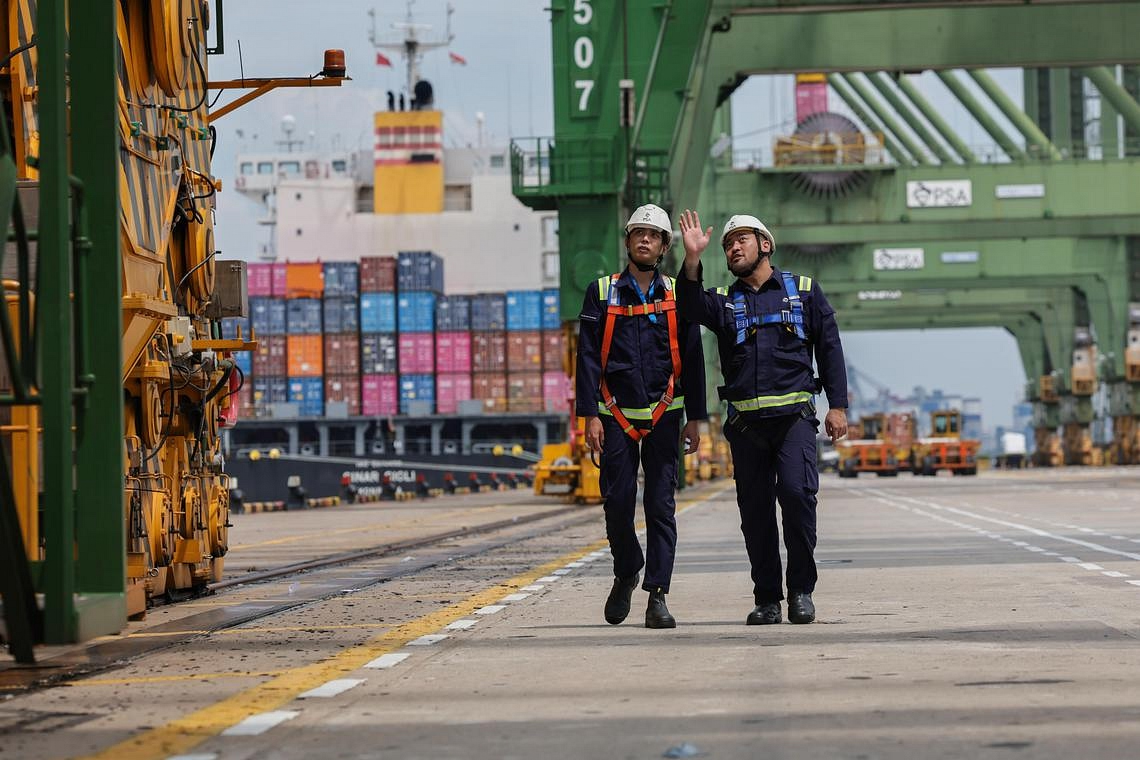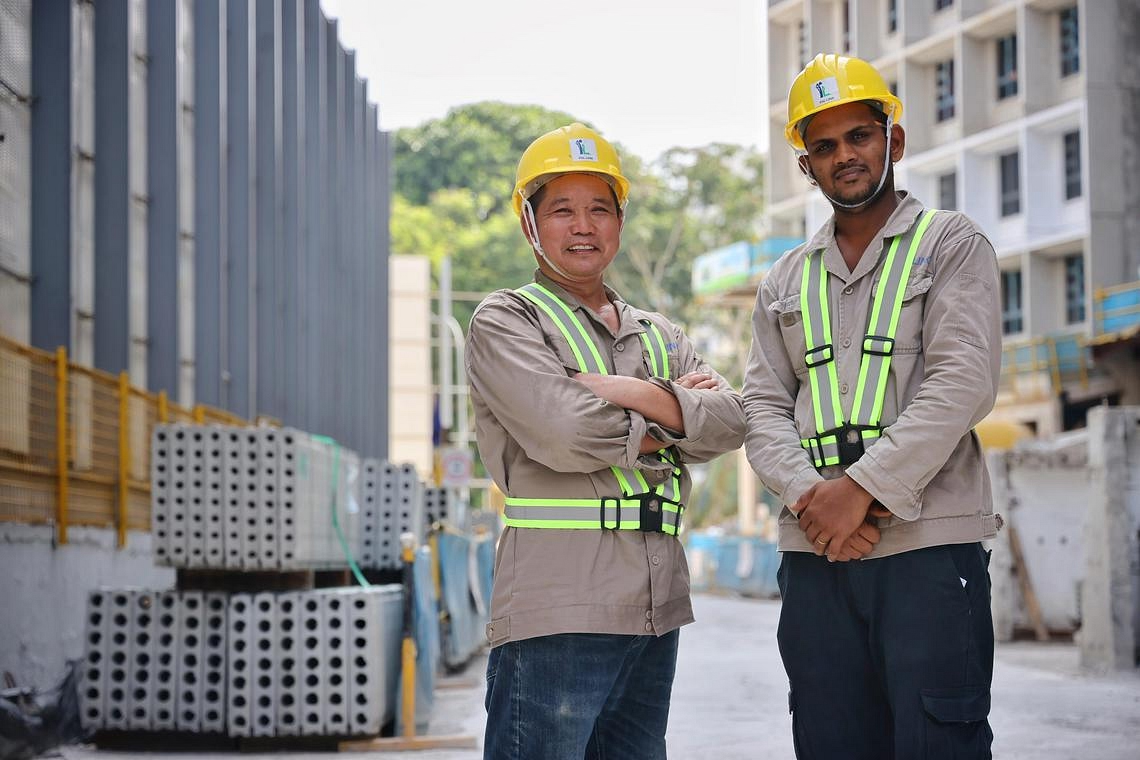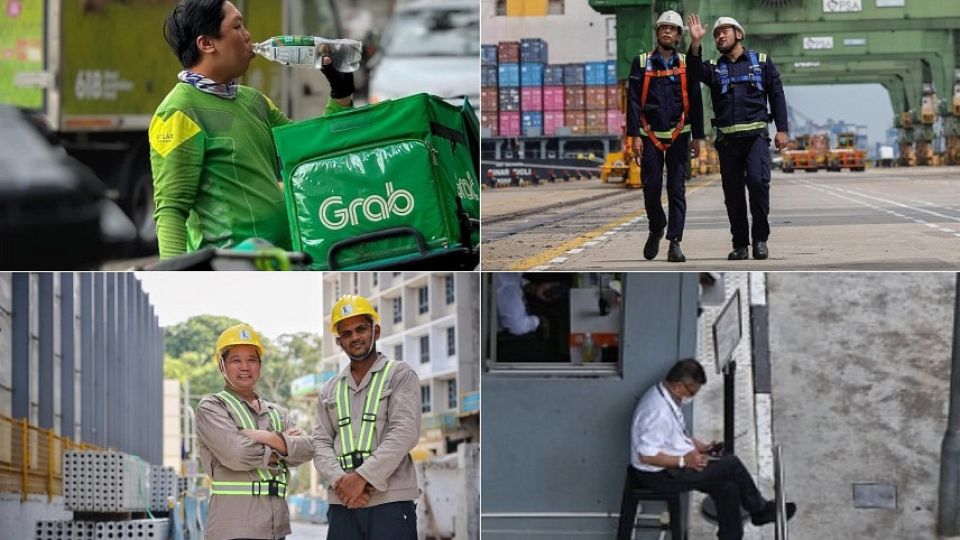October 8, 2024
SINGAPORE – Across the world, hundreds of millions of outdoor workers are bearing the brunt of rising heat. This includes people who farm the land and maintain gardens, work in construction or at ports or deliver food no matter what the weather. Even those who spend some of their time outdoors, such as security guards, are at risk.
Workers risk fatigue, illness and loss of income. Governments, companies and workers themselves need to better manage the risks to ensure they can still do their jobs safely and adapt to an increasingly hotter world.
On July 25, a report by the International Labour Organisation revealed that regions previously unaccustomed to extreme heat will face increased risks, while workers in already hot climates will confront ever more dangerous conditions.
Workers in Africa, Arab states and Asia-Pacific are most often exposed to excessive heat, the report said. In Asia-Pacific, 74.7 per cent of the workforce is affected.
“Earth is becoming hotter and more dangerous for everyone, everywhere,” said UN Secretary-General António Guterres said on July 25 in a global call to action on extreme heat.
“Billions of people are facing an extreme heat epidemic – wilting under increasingly deadly heatwaves, with temperatures topping 50 deg C around the world.” That’s halfway to boiling, he said.
And Singapore’s daily average temperature could rise by up to 5 deg C by century’s end if the world fails to slash fossil fuel emissions.
But better heat warnings, improved education of workers, mandated rest and water breaks, cooling shelters and changing work hours can all make a difference.
Singapore issued national heat stress advisory guidelines for the public in 2023 as well as compulsory steps to better protect workers. The Ministry of Manpower revised these in September 2024 to make it easier for companies to protect employees working outdoors against intense heat.
With greater awareness and proactive steps to protect workers, this will not only save lives but reduce productivity losses as well, experts say.
‘Mentally, you just have to push through’: Delivery riders endure longer hours, hotter days

PHOTO: THE STRAITS TIMES
Food delivery rider Roger hates standing still, especially when it is hot. “If I stop moving, that’s when the fatigue hits,” he said.
The hotter weather is taking a toll on him mentally, he said. “If you keep getting orders, you’ll forget all the tiredness,” said Roger, 45, a full-time delivery rider for Deliveroo.
And he has to work harder these days just to make the same amount of money as a couple of years ago. He works 12 hours a day to make about $150 and earn about $3,000 a month to support his family.
“My wife works as well. If not, we really cannot survive,” the father of two told The Straits Times. Like other riders who spoke to ST for this report, he did not want to use his full name.
Too hot to handle? Rising temperatures pose growing risk for port workers

PHOTO: THE STRAITS TIMES
The giant tower cranes that load and unload container vessels at Singapore’s ports are a testament to the Republic’s trade prowess – but also its vulnerability to heat.
For those who maintain these mammoth machines that tower more than 60m above the wharves, increasingly hot weather is proving to be a challenge.
Engineer Desmond Chia, 39, is part of a rapid-response team trained to keep the cranes working 24/7 by quickly fixing breakdowns at PSA’s port at Pasir Panjang. This role may see him working on the hydraulic track system that allows the cranes to move along the wharves, or fixing an electrical issue high up in the control room.
But high temperatures at ground level and up on the cranes have been taking a growing toll on him and his colleagues.
Building heat resilience: Helping construction workers adjust to S’pore’s sweltering weather

PHOTO: THE STRAITS TIMES
On Mr Liu Liangming’s first day back at his worksite in May after a three-month break in the temperate climate of his hometown in Jiangsu province, China, his supervisor told him to limit outdoor work to no more than two hours.
This was an unusual instruction for Mr Liu, 52, whose vocation involves constructing the skeleton of HDB blocks at a site in Owen Road.
As a formwork worker, he usually works under the sun throughout his eight-hour shift, hoisting steel and wooden beams into a matrix structure, and pouring concrete into moulds.
But on May 15, his first day back, Mr Liu was relieved to be working mostly in the shade, as the sun and humidity felt extra unforgiving after spending three months back in eastern China. During the wintery Chinese New Year period, the temperatures plunged to -12 deg C, he said.
Security risk: Scorching conditions could threaten guards’ safety, performance

PHOTO: THE STRAITS TIMES
Mere steps away from the cool reprieve of an air-conditioned guardhouse, security guards at a condominium complex in Sims Avenue conduct checks on everyone and every vehicle passing through the back gate.
Even under the shade of a parasol, they have to contend with Singapore’s sweltering heat.
Previously, the guards did not even have the parasol, table and chair that now makes up their outdoor workstation, said Mr Randy Ang, general manager of Metropolis Security Systems, which eventually provided the workstation set-up for its officers deployed at the condo.
“There is high traffic load and kids crossing between 11am and 3pm. Standing under the hot sun is very demanding for the officers,” he said.
The dangers of heat stress: A sudden strike or a slow burn

PHOTO: THE STRAITS TIMES
Heat is a silent killer – it can strike quickly by causing heat stroke when the mercury soars. Or it can kill after years of repeated exposure to extreme temperatures that cause serious heart, lung and kidney problems. The key is recognising the signs of heat stress.
The human body is designed to maintain a steady temperature. Exposure to excessive heat triggers sweating as the body tries to cool itself.
But this can lead to rapid loss of water and electrolytes, especially during heavy exertion during work or exercise. And when humidity is high, this makes it harder for the sweat to evaporate quickly, leading the body to heat up further.
All this risks fatigue, headaches and dehydration, unless the person finds shade or air-conditioning to cool down as well as cool drinks to rehydrate. Rest is key.

